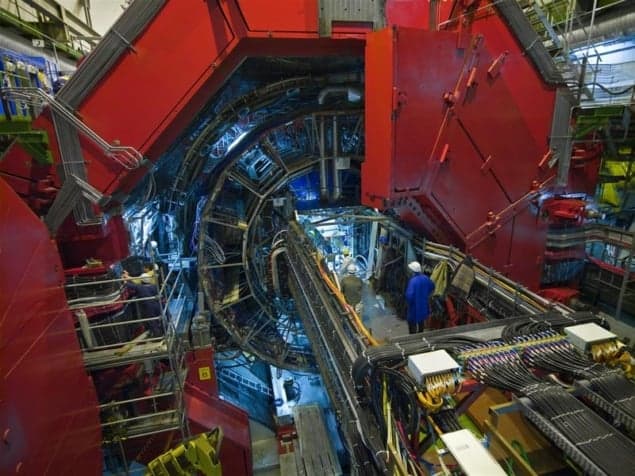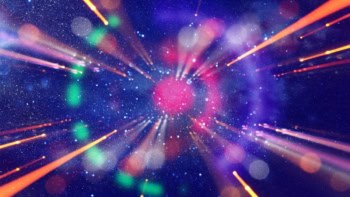
After seven months of successful proton collisions at 7 TeV in the Large Hadron Collider (LHC), researchers at CERN are now reconfiguring their famous machine to collide lead nuclei within the next few days. Collisions between these heavier particles will generate the highest temperatures and densities ever recorded on Earth, recreating the early universe moments after the Big Bang.
“This shows that the objective we set ourselves for this year was realistic, but tough, and it’s very gratifying to see it achieved in such fine style,” said Rolf Heuer, CERN’s director general.
The change in beamline marks the beginning of the main physics programme for the ALICE detector, which was specifically designed to track large numbers of particles. It can detect up to 15,000 particles per event, which may be produced from the collisions between lead nuclei occurring in the centre of the detector. The extremely high temperatures at the collision points will cause protons and neutrons to break down into a dense soup of subatomic particles known as a quark–gluon plasma, a condition thought to have existed shortly after the Big Bang.
Go ask ALICE
One of ALICE’s main scientific goals is to characterize this quark–qluon plasma in an attempt to find out more about the nature of the strong force, one of the four fundamental forces in nature. Despite being responsible for generating 98% of the mass of atoms, the strong force is still the most poorly understood of the forces.
We will be creating the highest temperatures and densities ever produced in an experiment in these mini big bangs David Evans
“We will be creating the highest temperatures and densities ever produced in an experiment in these mini big bangs”, said David Evans, leader of the UK team at the LHC’s ALICE experiment. “Although the tiny fireballs will only exist for a fleeting moment (less than a trillionth of a trillionth of a second) the temperatures will reach over ten trillion degrees, a million times hotter than the centre of the Sun.”
The LHC beamlines will be run at a centre of mass energy of 2.76 TeV per colliding nucleon pair, which will generate temperatures and densities that are an order of magnitude larger than the previous record held by the Relativistic Heavy Ion Collider (RHIC) at the Brookhaven National Laboratory in the US.
“At the LHC we’ll be continuing a journey that began for CERN in 1994, which is certain to provide a new window on the fundamental behaviour of matter and in particular the role of the strong interaction,” says Jurgen Schukraft, spokesperson of the ALICE experiment.
If all goes to plan, the LHC will begin circulating lead ions by the weekend before CERN engineers spend up to a week tuning the beamlines in preparation for the scientific programme. Researchers will then record data until 6 December when CERN will shut down for maintenance work over Christmas. “This will give us plenty of time,” says Evans. “At these energies, the lead collisions will generate more data in a month than proton collisions could generate in a year.”
Operation of the collider will start again with protons in February and physics runs will continue through 2011.



